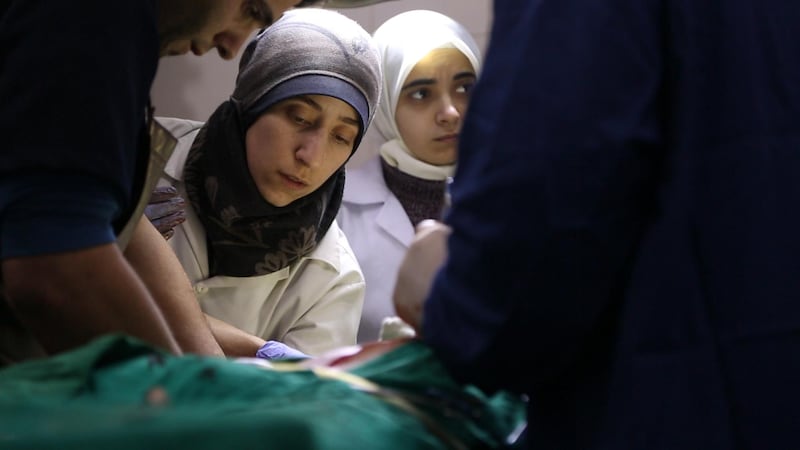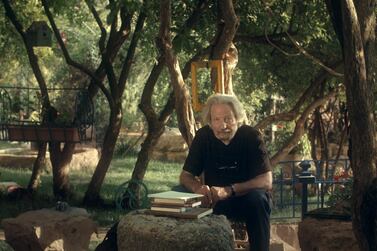Feras Fayyad became the first Syrian director to have a film nominated for an Academy Award. The nod came when his searing documentary, Last Men in Aleppo (2017), which centres on Syria's volunteer search-and-rescue organisation, the White Helmets, was in the running for Best Documentary Feature last year. His latest film, The Cave, could make him a contender once again.
Not that awards are the point of his work. Fayyad, who underwent prolonged torture as a prisoner of the Syrian regime, is issuing a call to action from an international community that has thus far stood by as his country is torn apart. Shot by a team of three cinematographers from Damascus between 2016 and 2018, and directed remotely by Fayyad, his latest documentary takes us inside The Cave, a makeshift underground hospital located in a network of tunnels, where fearful civilians took refuge from barrages by the Syrian regimeand Russian forces above ground during the siege of Eastern Ghouta that lasted for more than five years.
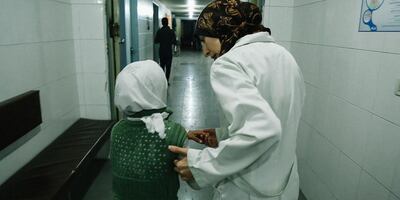
His way in is Dr Amani Ballour (referred to in the film as Dr Amani), 30, a paediatrician who stayed in Eastern Ghouta to aid people who refused to be forced from their homes. "Eastern Ghouta suffered the longest siege in modern history," says Fayyad, speaking from New York. "There was no way in, no way out. There were 12 chemical attacks and nobody reacted.
"Just think about it. There is a crazy government using chemical attacks against its own people, again and again and again. There are thousands of international laws not allowing this to happen, but it's happening. It makes you feel destroyed and crazy."
Fayyad's film is an attempt to shame the world into action by showing the consequences of its inaction. "My mission was to bring this situation into a documentary so emotional that people connect to, feel and understand the impact of these war crimes on the civilians who want to stay and don't have any intention of leaving. I feel this is the story of millions of Syrians; a story that should be seen by everyone."
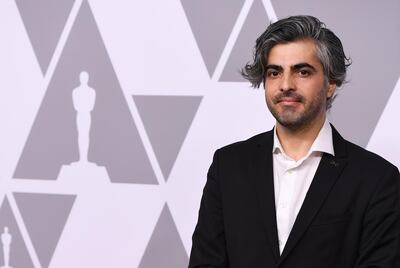
Fayyad first saw Dr Amani in footage shot by a friend that showed the aftermath of the 2013 sarin attack on Eastern Ghouta. "There were 1,500 people killed in one night," he says. "She was sitting, surrounded by the bodies of children and women, and it was really shocking. She knew there was a chemical attack, but she didn't know what to do. A doctor is not trained enough to deal with this kind of use of chemicals."
The director contacted her and they kept in touch. By the time filming began in Eastern Ghouta, she had made history by becoming the first female manager of a hospital in Syria.
She's one of the few women to graduate as a doctor from Damascus University and says she strives to change the way women are perceived and treated. For Fayyad, who saw his Kurdish mother suffer because of her heritage and gender and watched helplessly as two of his seven sisters lost jobs because they were women, Dr Amani was similar to a "superhero in a comic, but real".
"I didn't want to tell the story of traumatised Syrian refugees whose primary role is to evoke tears," he says. Nor did he want to "show a woman as a mother, wife or lover". Rather, he wanted to reflect the "gender shift I saw strongly happening" as he filmed with female journalists, activists and lawyers in Aleppo and Idlib. Ironically, it's the conflict that has, in part, opened up new opportunities for women.
"Because they know they could die, always, why not fight for their rights?" says Fayyad. "Also, a lot of men have died around them, so there are empty spaces that need to be filled by somebody and women are managing to do that."
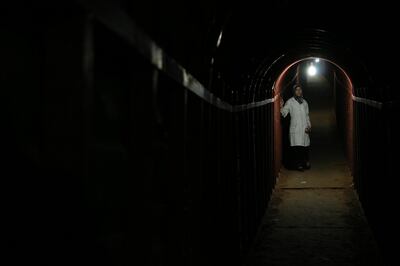
He acknowledges that the women he met were still a minority, but says he hopes that in bringing stories of people such as Dr Amani to the screen, a bigger cultural change might occur. However, it wasn't a foregone conclusion that she would be his focus. While his team filmed in Eastern Ghouta, Fayyad risked being captured and executed by Al Qaeda or killed in a bombing to film other female subjects in hospitals in Idlib and the Aleppo countryside.
"You can't exactly decide about your subject completely, especially in this situation," he says. "You can't decide what is going to happen, especially with the dangers in the hospital. So I didn't know if Dr Amani would be, in the end, my subject, but I was asking my cinematographers to focus on her and her work."
They also vividly captured a nurse called Samaher, whose memory had been damaged by a bomb blast, and Dr Salim, a former professor at Damascus University, who used classical music to soothe patients in lieu of anaesthetic and as a form of resistance against the barbarism of the regime.
Fayyad lost contact with his cinematographers when the internet satellite they were using to send him footage was destroyed. Three months later, after the forced displacement of people from Eastern Ghouta, the cinematographers joined Fayyad in Idlib, where he also met Dr Amani face-to-face for the first time, carrying material they'd smuggled through regime and Russian checkpoints.
To his amazement, they had filmed a chemical attack. "To have such great evidence of a barbaric crime and to have that captured through the eyes of Dr Amani is something beyond any imagination," he says. His crew would have been "killed or kidnapped" if they'd been exposed, he says.
Together, he and his cinematographers amassed 1,200 hours of footage. But when he went into the editing room, Fayyad says he realised he had to set the material he'd risked his life for aside and focus on the Eastern Ghouta story. "It was very painful," he admits.
So was editing the film. Going through the footage and selecting the best moments to create the connection he sought between subject and viewer was difficult, both physically and mentally.
"Sometimes we'd edit for one hour and it felt like two days," the filmmaker recalls. "My body sometimes shut down, like all the energy had fallen out of it, and I couldn't open my eyes. But I feel like what I am trying to do is worth it. Not just for me but for my subjects and for the people who worked with me and suffered doing this work.
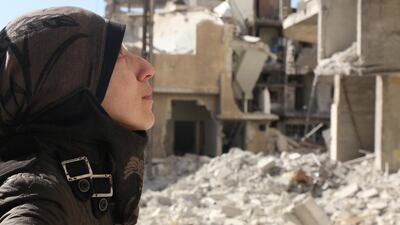
Inevitably, there has been pushback from the regime, as there was towards Last Men in Aleppo. "One of the subjects of the film was captured and is in jail and we've removed his image," says Fayyad. "Samaher was captured and then taped by a journalist working for RT and Syrian TV. She was forced to give a story against our movie and asked for information about my location and my family's location."
Fayyad says he isn’t giving up, however, and is already working on his next project about female lawyers in Syria.
“I have witnessed so much crime, I feel I have a responsibility to film this for the outside world. That’s how my brain functions, I think. It’s the daily conversation inside my brain.”
